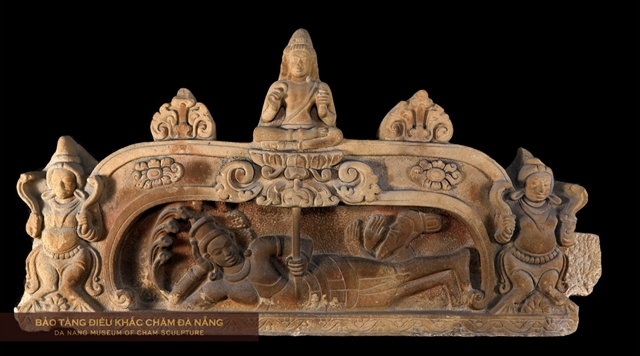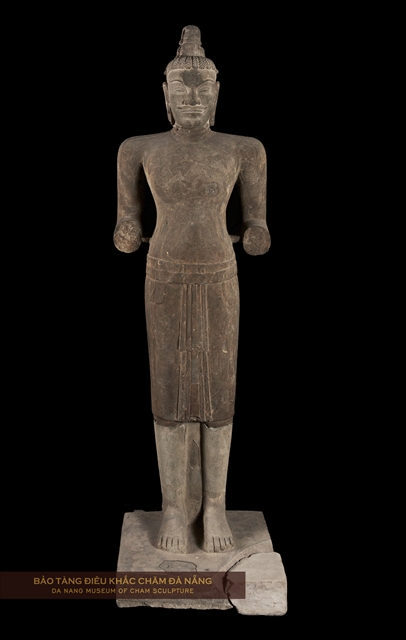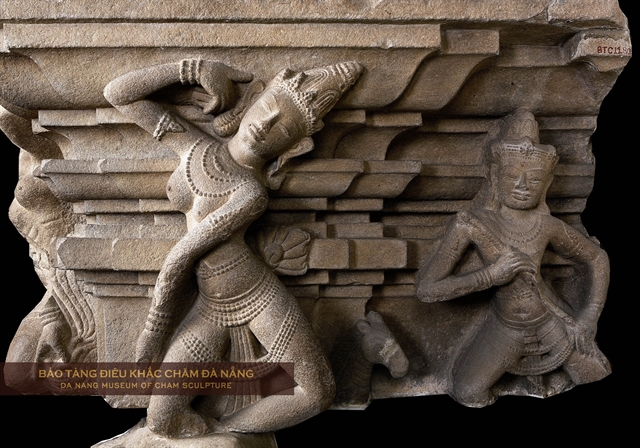 Life & Style
Life & Style

 |
| The sculpture Brahma the Creator (from the 7th to 8th century) is on display at Đà Nẵng City's Chăm Sculpture Museum. The statue was one of the three latest recognised National Treasures. — Photo courtesy of Đà Nẵng City's Chăm Sculpture Museum |
ĐÀ NẴNG — Three sandstone sculptures at the Chăm Sculpture Museum in the central city of Đà Nẵng have been recognised as National Treasures following the Prime Minister’s decision released on January 18.
The sandstone works include: Brahma the Creator, or E1 Tower Mỹ Sơn (from the 7th to 8th century); Shiva statue or Mỹ Sơn C1 (8th century); and Apsara Trà Kiệu dancers (the 10th century), are all currently displayed at the Chăm Sculpture Museum in the central city.
The management of the museum said the recognition increased the list of National Treasures from six to nine, and all the artefacts have been well preserved for display by the museum.
Bas-relief Brahma the Creator is a decorative carving on the tympanum of the E1 tower in Mỹ Sơn Sanctuary, the UNESCO World Heritage site in Quảng Nam Province. It was brought to the museum in 1935. The figure depicts the cosmic creation in Indian mythology.
Shiva statue is one of the three most popular Hindu images, including Brahma, Shiva and Vishnu, as the Chăm sculpture was influenced by Indian mythology and many Indian deities are represented in statues, busts or reliefs.
 |
| Shiva statue is one of the three most popular Hindu images, including Brahma, Shiva and Vishnu, as the Chăm sculpture was influenced by Indian mythology and many Indian deities are represented in statues, busts or reliefs. — Photo courtesy of Đà Nẵng Chăm Sculpture Museum |
The Dancers' Pedestal of Trà Kiệu depicts two celestial dancers, known as Apsaras, in the graceful three-bends posture.
Trà Kiệu, or Simhapura (Lion City), served as the first capital in the early period and an important political centre of the Champa Kingdom for centuries, built around the end of 4th century under the rule of King Bhadravarman.
Last year, two sandstone statues in the museum – Ganesha and Gajasimha – were recognised as National Treasures.
Four other national treasures were the Trà Kiệu Pedestal; the Mỹ Sơn E1 Pedestal; statue of Tara/Avalokiteshvara, and the Đồng Dương Pedestal.
 |
| The sculpture of the Dancers' Pedestal of Trà Kiệu depicts two celestial dancers, known as Apsaras, in the graceful three-bends posture. It was promoted as a National Treasure. — Photo courtesy of Đà Nẵng Chăm Sculpture Museum |
The museum, situated on the west bank of the Hàn River, was built in late 1915 with a major contribution from Henri Parmentier, a prominent archaeologist with the L’Ecole Francaise d’Extreme Orient (the Far East Archaeological Research Institute) in Hà Nội.
In mid-1919, he published the first catalogue of the museum, marking its inaugural ceremony.
It preserves and displays thousands of artefacts and sandstone statues found at many Chăm towers and excavations from the Sa Huỳnh Culture (between 2,500 and 3,000 years old) in the central region.
The museum, one of the most visited sites in the tourism hub, was recognised as a historical heritage site of the city last year.
It has opened the Chăm Culture showroom creating diversified exhibits and arts space for tourism.
Đà Nẵng City also listed Chăm towers found at Phong Lệ Village in the city’s cultural relics.
The Champa Kingdom ruled in the central coastal region between the 4th and 13th centuries.
In 2022, the Ma Nhai (Inscriptions) collection in ancient Nôm and Han Chinese characters, carved on cliffs and caves at the famous Marble Mountains in Ngũ Hành Sơn District of Đà Nẵng, was promoted as part of the documentary heritage of Asia and the Pacific at the 9th general meeting of the Memory of the World Committee for Asia and the Pacific (MOWCAP).
It’s also the first UNESCO World Heritage of Đà Nẵng. — VNS




